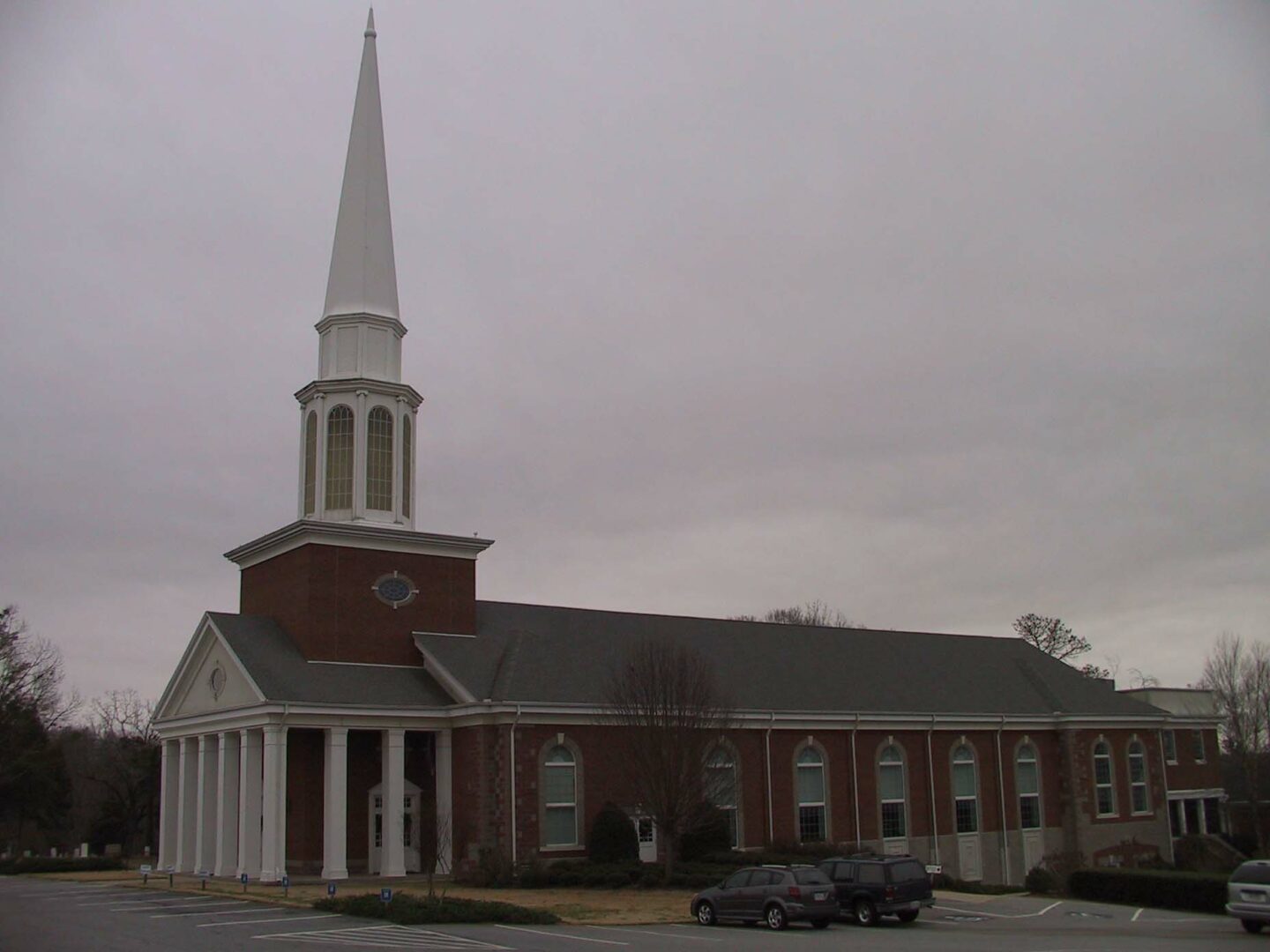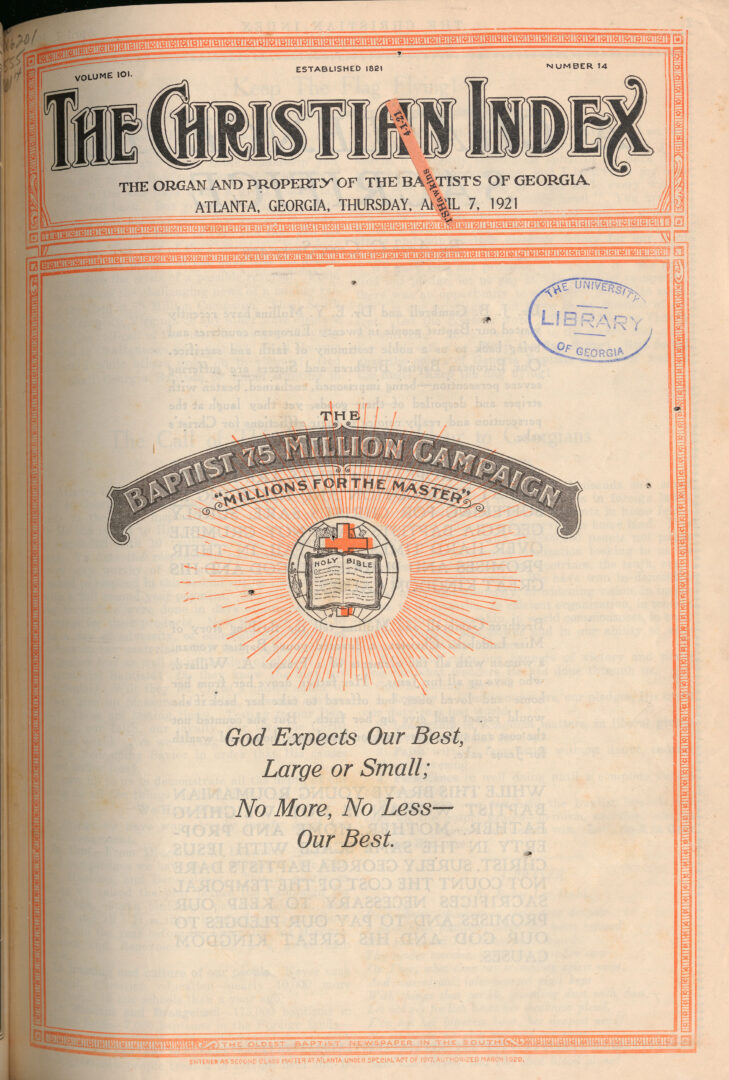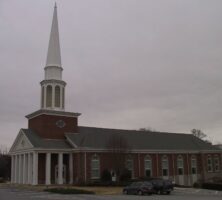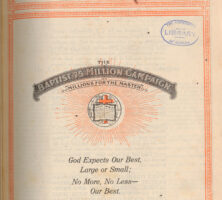On June 29, 1822, the first general association of Georgia’s various Baptist communities organized at Powelton Baptist Church in Hancock County. Initially called the General Baptist Association and later called the Baptist Convention for the State of Georgia, this organization served as an important foundation for the Southern Baptist Convention, which formed in Augusta in 1845. Renamed the Georgia Baptist Convention in 1919, this organization still operates as the state’s primary convention for Georgia’s 1.2 million Southern Baptists.
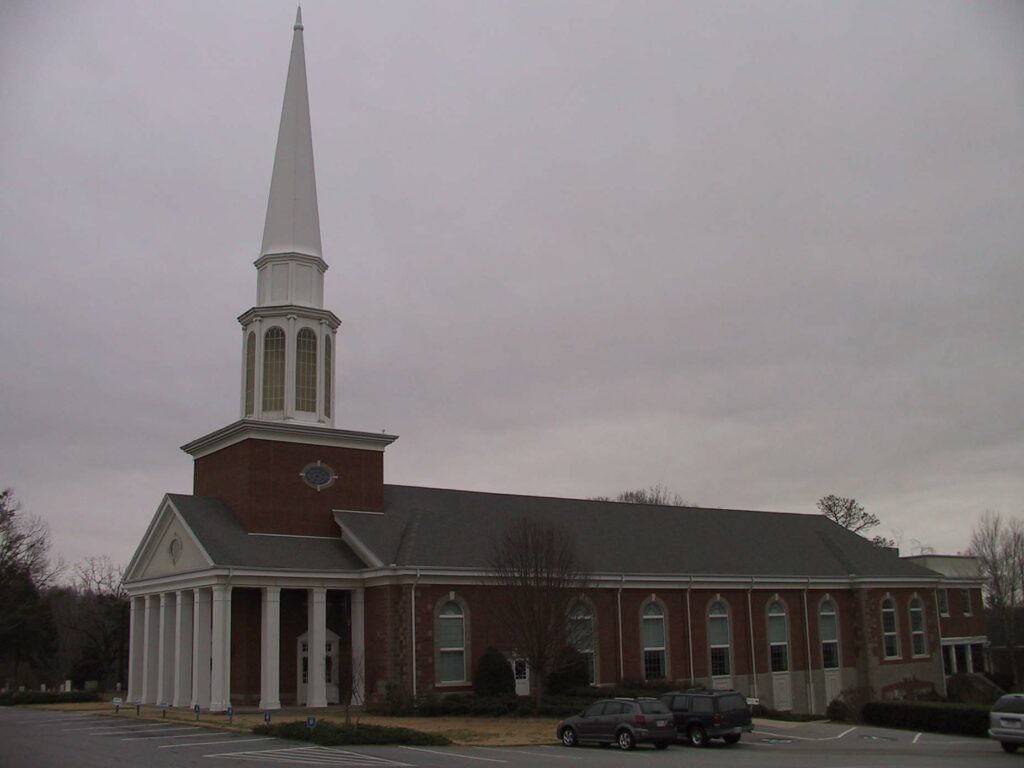
Georgia Baptists before the Civil War
Two strains of Baptists populated colonial Georgia. Particular Baptists were Calvinist in theology and displayed a notable disdain for revivalism and informal worship practices. Separate Baptists aligned in part with Calvinist doctrine but expressed a strong affinity for revivalism and informal, even charismatic, worship. After a series of revivals came through Georgia after 1801, Baptist leaders Edmund Botsford and Daniel Marshall set aside their differences and attempted to found a unified Baptist organization. Concerned about the need for cooperative missions work, Botsford and Marshall’s collaboration on this mutual problem laid the groundwork for the Powelton convention of 1822.
The founding of the Baptist Convention of Georgia at Powelton made possible the collaboration of various Baptist groups and financial backers. The result was a growth in organized Baptist activities, including Baptist missions as well as domestic Bible and tract societies. Founded in 1833, Mercer University also received strong support from the convention, as did the Christian Index. The Christian Index, published initially in Washington, D.C., was brought to the state in 1833 and donated to the convention in 1840 to serve as the organization’s official newspaper.
In 1845 controversy between northern and southern factions in the Triennial Convention of the American Baptist Home Mission Society erupted. The divisive issue was slavery—some southern Baptists did not trust the proclamations of neutrality that northern Baptists had made. To test the neutrality of the northern faction on the matter of slavery, Georgia Baptists promoted a slaveholder, James E. Reeve, to fill an open slot in the society’s roster of missionaries. This move was also intended to achieve a proportionate number of missionaries in the South, a shortcoming in the society that southern Baptists found inexcusable. Northern Baptists, some of whom were avid supporters of the abolitionist movement, moved to stop Reeve’s appointment. In response to this action, Georgia Baptists advocated the withdrawal of all southern Baptist congregations from the national convention. Subsequently, at a meeting on May 8-12, 1845, Georgia Baptists and their supporters formed the Southern Baptist Convention in Augusta, with William Bullein Johnson serving as the convention’s first president.
As sectional conflict erupted into the Civil War (1861-65), Georgia’s Southern Baptists granted the Confederacy their fullest support. Viewing the “southern cause” as an endeavor blessed by God, many prominent Baptist preachers in Georgia served as the trumpeters of secession, slavery, and states’ rights. As the war came and went, however, the denomination also felt the conflict’s impact, particularly in terms of church membership. In 1860 more than 95,000 Baptists were affiliated with the state convention. By 1870 this number had dropped to 37,500.
Reconstruction, the New South, and Georgia’s Southern Baptists
As Reconstruction came to an end, the state convention refocused efforts on missions work, founding the Board of Missions in Atlanta in 1877. Lottie Moon, one of the first single women to serve as a Baptist missionary, taught and ministered in China from 1873 until 1912. Today the Lottie Moon Christmas Offering is collected annually to fund Baptist missions.
Sunday schools also proliferated in the state under the direction of the board’s first mission secretary, James Harvey DeVotie, as did a series of social service organizations. Such attention to the state’s social problems, especially the concerns of youth in the industrializing world of the New South, grew in the following thirty years as the Georgia Baptist Orphans Home appeared in 1888, followed by the Baptist Young People’s Union in 1895. The push for religious education likewise led to the founding of several Baptist colleges in the state, including Brewton-Parker Junior College (later Brewton-Parker College), Norman College, and Shorter College (later Shorter University).
Temperance campaigns, first started in the 1850s, received additional support, although most in the state convention argued for conversion rather than state legislation as the solution to excessive liquor consumption. Such emphasis on conversion as the key to social equilibrium also animated efforts to address the personal sins of dancing, inappropriate sexual relations, and the use of tobacco. Concerning race relations in this era of Jim Crow, however, Georgia Baptists most often either avoided confrontation or offered tacit approval to the racial order. Some, such as Atlanta Baptist Tabernacle’s Len G. Broughton, criticized its more violent manifestations, such as lynching. But few went beyond the general promotion of conversion and “good manners” as the keys to avoiding racial conflict.
By the time it renamed itself the Georgia Baptist Convention in 1919, the state convention showed the impact of a generation of growth. Georgia Baptists numbered 293,244 members and supported nearly 2,500 churches, many located in such urban areas as Atlanta, Augusta, and Savannah. After World War I (1917-18), Georgia Baptists reorganized for what they perceived as an inevitable postwar revival, buying the Christian Index outright from B. J. W. Graham and his Index Printing Company in 1920 and channeling funds toward revivalism efforts.
The economic decline during the Great Depression undercut these efforts as contributions to local churches dropped drastically. Debt increased among congregations in the 1930s, forcing some churches to sell off their mortgages. Other new programs, such as the Department of Student Work and Department of Evangelism, remained underfunded throughout the depression. Despite these problems, evangelism efforts in the state had success. Although Georgia Baptists founded few new churches in the interwar years, their membership rose from 330,307 in 1920 to more than 581,000 in 1945.
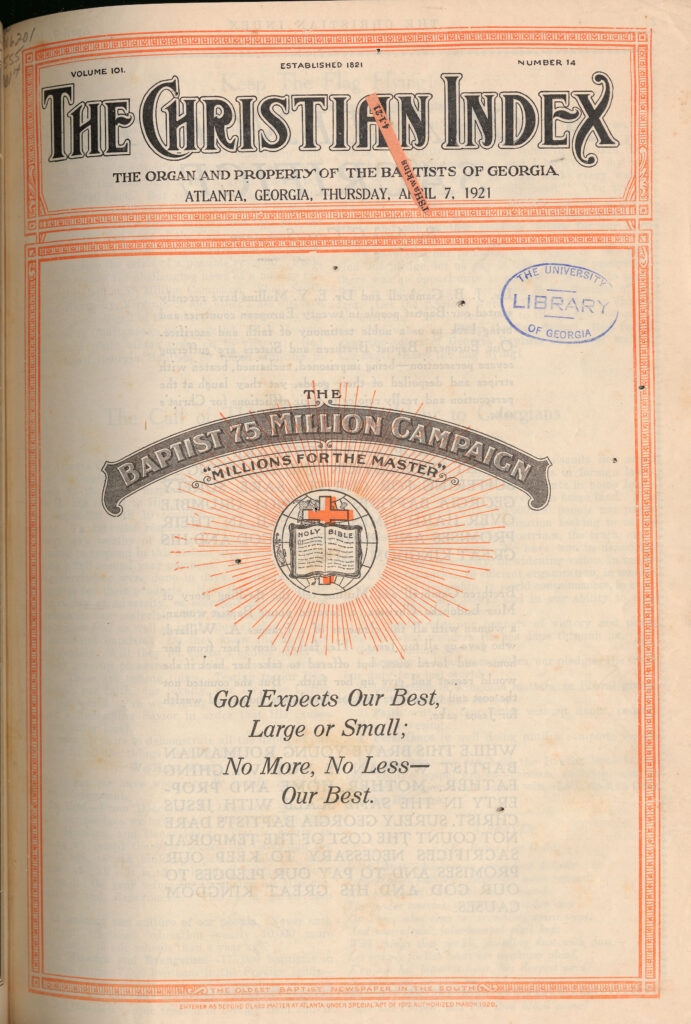
Southern Baptists and Modern Georgia
World War II (1941-45) brought both a revival in the state’s economy and a revival in Baptist efforts. Newfound funds provided for the founding of another Baptist college, Truett-McConnell Junior College (later Truett-McConnell College) and the expansion of denominational departments and programs. The Capital Improvements and Endowment Programs oversaw the construction and renovation of a number of Baptist churches in the state; indeed, between 1955 and 1980, the convention built more than 300 new churches in Georgia.
These new congregations, however, also encountered a changing social environment, particularly as the challenges of civil rights workers upset the long-standing tacit approval of Jim Crow by individual churches. Some congregations approved of the movement; others opposed desegregation efforts to the point of closing worship services off to Black congregants. Most, however, argued for compliance with federal mandates but did not offer direct support for desegregation.
By the late 1960s and 1970s, with desegregation assured, other issues captured the attention of the state’s Southern Baptists. The controversies over theological and cultural liberalism that split the Southern Baptist Convention in the early 1980s likewise led to divisions in the state convention and in various congregations. Despite these controversies, the state convention continued to sponsor the upgrading of ministry facilities and programs, such as the construction of a new auditorium in Toccoa, a training camp for ministers in Forsyth, and several partnership programs between the Georgia Baptist College of Nursing and programs in Connecticut, Germany, Liberia, and Panama.
In 1994 the convention met in session at Macon to pass a resolution that sought “reconciliation between black and white Americans by seeking forgiveness for the sins of our heritage, and ourselves.” J. Robert White, who became the state convention’s executive director in 1993, oversaw this resolution’s passage, and he continues to direct affairs for a convention that has played a pivotal role in the religious history of Georgia.





